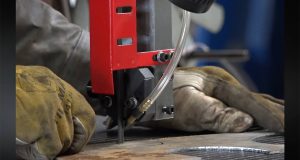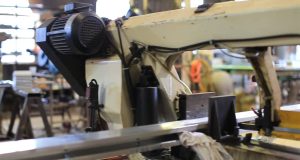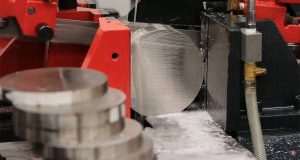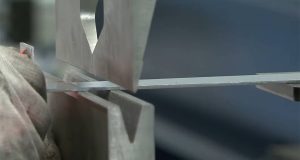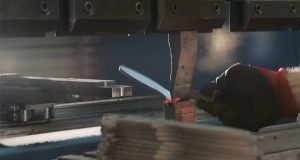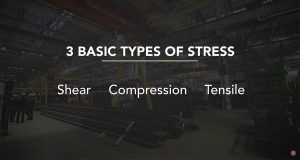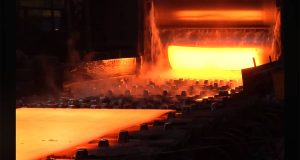Why Bi-Metal Blades Stand Out in Modern Cutting Applications
When it comes to bandsaw blades, not all materials are created equal. Bi-metal blades are a standout option due to their strength, longevity, and efficiency. Constructed by fusing two types of steel, bi-metal blades feature a high-speed steel cutting edge and a flexible spring steel backing. This unique composition makes them a popular choice for users who require reliable cutting performance across a variety of materials.
What Makes Up a Bi-Metal Blade?
- Dual Material Construction: A bi-metal blade has a flexible carbon or alloy steel back and hardened high-speed steel teeth.
- Electron Beam Welding: This precise welding process bonds the cutting edge to the back, forming a strong, unified blade.
- Tooth Grinding: After bonding, the teeth are ground into the high-speed steel, ensuring they maintain hardness where it matters most.
Applications That Benefit from Bi-Metal Blades
Bi-metal bandsaw blades are designed to handle challenging materials and extended usage. Their versatility makes them suitable for:
- Cutting low alloy and mild steels
- Processing non-ferrous metals such as aluminum and brass
- Handling plastics and other tough synthetics
- Wood cutting in high-volume environments
- Fabrication shops, automotive work, and metalworking industries
Advantages Over Standard Carbon Blades
Standard carbon blades may be adequate for basic tasks, but they wear out faster under stress. Bi-metal blades are built to perform under pressure while maintaining edge integrity. The high-speed steel teeth remain sharper longer, reducing downtime and replacement costs.
When Should You Use Bi-Metal Blades?
If you’re consistently cutting dense or abrasive materials, switching to bi-metal blades is a practical decision. They provide cleaner cuts, generate less heat, and resist blade fatigue better than most carbon-based options. For professional shops and demanding DIYers, they offer both performance and value.
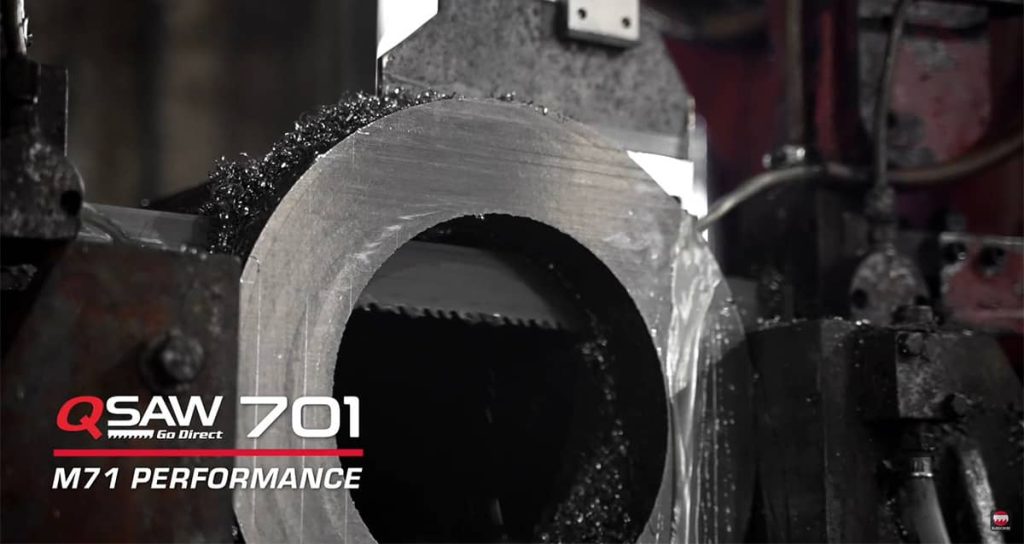
Quick Comparison Table
| Feature | Bi-Metal Blades | Standard Carbon Blades |
|---|---|---|
| Material Composition | High-speed + spring steel | Single steel type |
| Blade Life | Longer | Shorter |
| Cutting Performance | High precision | Moderate |
| Ideal Use Cases | Metal, plastic, dense wood | Soft wood, plastics |
| Cost | Higher upfront | Lower upfront |
Test Your Knowledge on Bi-Metal Blades
Think you know how bi-metal blades are made or what materials they’re best suited for? Head over to sawbladeuniversity.com and take the quick quiz on bi-metal blades. It’s a fast, informative way to see how much you really know and you might even pick up a few helpful insights along the way. Give it a try and sharpen your understanding.
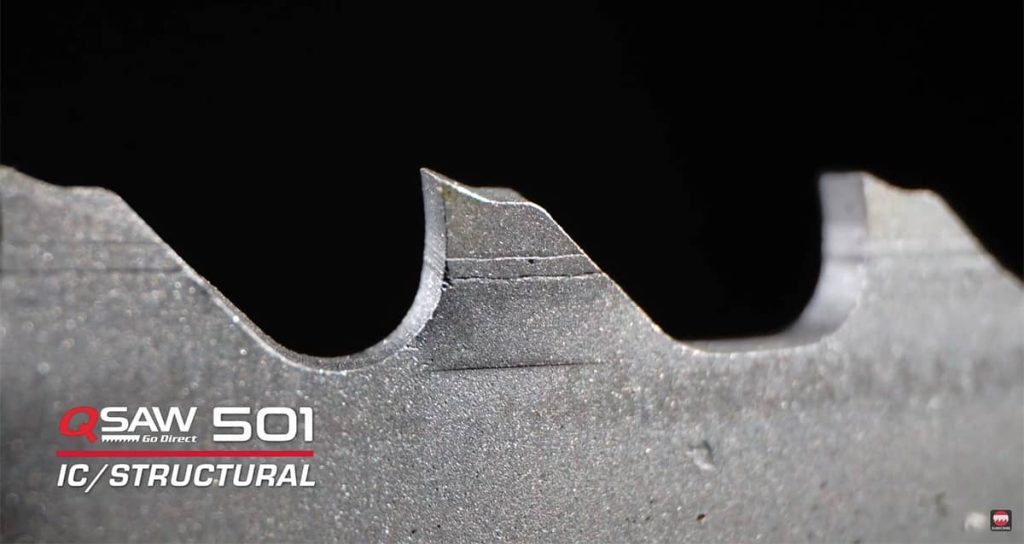
Key Takeaway on Blade Selection
Choosing the right bandsaw blade depends on what you cut and how often. For those who prioritize durability and clean results, bi-metal blades are a reliable upgrade. While the initial cost is higher, the long-term efficiency justifies the investment.
Choosing the Right Blade for Demanding Jobs
In metal fabrication, using the proper blade makes all the difference. Whether you’re cutting structural steel or exotic alloys, the wrong tool leads to excessive wear, wasted material, and inconsistent results. That’s why Qsaw’s specialty band saw blades are tailored for different demands offering targeted solutions for specific materials and job types.
Quick Overview: Qsaw Blades Built for Precision
- Designed for structural steel in fabrication and welding shops
- Special tooth profile prevents overfeeding and chipping
- Ideal for cutting beams, tubes, and structural bundles
- Built with M-42 high-speed steel for added durability
- Delivers lower noise and longer blade life
Qsaw 601 M42 All Purpose Blade
- Suited for carbon, chrome, die, and stainless steels
- Great for both horizontal and vertical bandsaws
- Works well on tubes, pipes, and various steel types
- Ground tooth geometry and 5–7° rake angle
- Known for fast cutting and reduced vibration
Qsaw 701 M71 High Production Blade
- Engineered for exotic alloys like Inconel and Titanium
- Pulsating action for aggressive cutting
- Variable tooth geometry reduces heat buildup
- Durable under extreme heat and material hardness
- Offers exceptional wear resistance in harsh cutting conditions
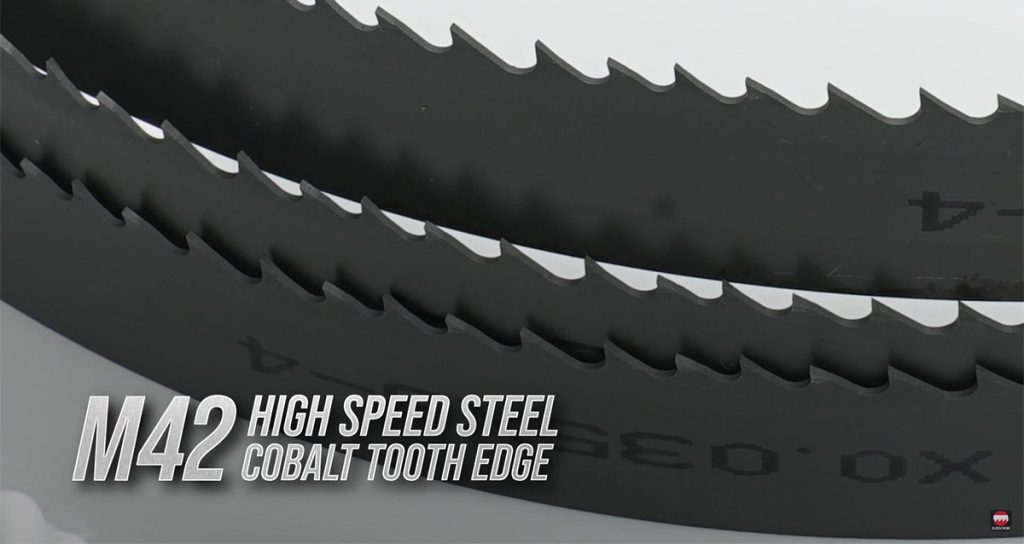
Long-Term Results That Cut Costs
Each Qsaw blade series is built not just to slice through metal but to stand up to industrial use. Whether you’re a shop cutting heavy structural profiles or working with exotic alloys in aerospace manufacturing, the right blade means more uptime and fewer blade changes. With their targeted designs, advanced metallurgy, and solid performance, Qsaw’s 501, 601, and 701 blades help maintain pace without compromising precision or budget.
Notable Features at a Glance
- High-speed steel teeth stay sharp longer
- Welded to a flexible backer for durability
- Suitable for a broad range of materials
- Resists heat and cracking
- Compatible with a wide variety of saws
Maintaining Your Bi-Metal Blade
To get the most from your blade, follow these practices:
- Keep your saw properly aligned
- Use correct blade tension
- Match blade pitch to material type
- Lubricate where needed to reduce friction
Better Maintenance, Better Results
Keeping your tools in working order doesn’t just prevent downtime it directly impacts the quality of your work. In our article “How to Improve Tool Maintenance in a Fabrication Shop,” we highlight practical steps that make daily upkeep easier and more effective. From organizing inspections to streamlining replacement schedules, the guide offers simple yet impactful tips. Check it out to keep your tools running reliably and your workflow steady.
Bi-metal blades combine strength and flexibility in a way that delivers consistent results over time. Whether you’re in a fabrication shop or working on high-demand projects at home, understanding their capabilities helps you make better choices for your cutting tasks.


